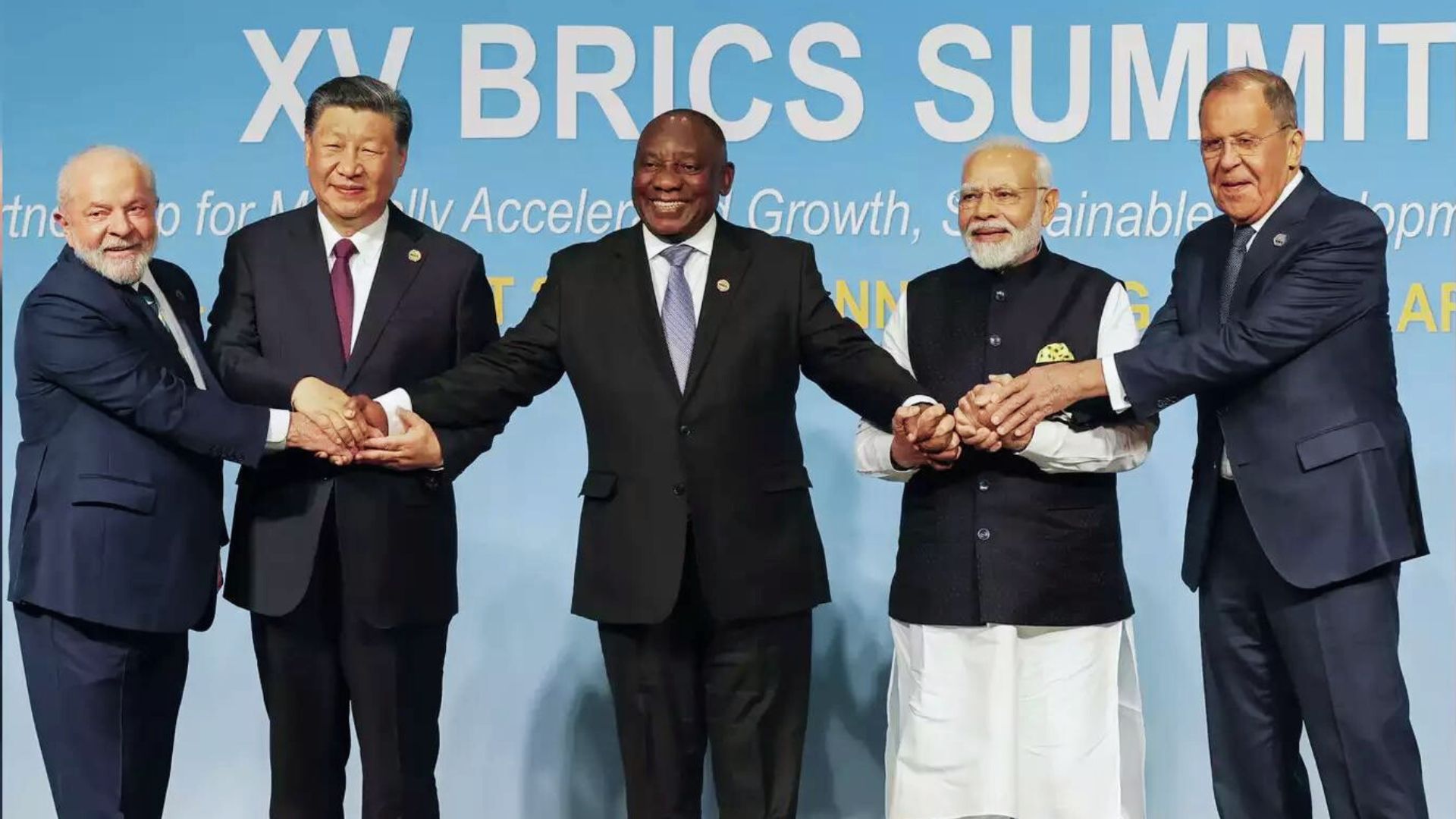India-Brazil, two thriving democracies with rich histories and diverse cultures, are leading the way in this transformation and have become important forces in forming the new global environment. The Global power dynamics are undergoing a dominant shift, moving from the Western-dominated unipolar system to a multipolar order defined by the emerging economies.
The BRICS Connection
Unlike popular belief, BRICS is much more than just an acronym for Brazil, Russia, India, China, and South Africa. The term “BRICS” has resonance. It represents the emergence of a new global order through the blending of various cultures, economies, and geopolitical viewpoints. India and Brazil are the two BRICS countries that most prominently represent this vision. Based on the common goals of advancing economic expansion, and development, and a fairer allocation of worldwide influence, the BRICS alliance offers these countries a forum for cooperation and a realignment of global power dynamics.
Why is the India-Brazil Partnership Strategically Important?
There are multiple reasons why Brazil and India represent significant pillars in the BRICS set-up, and it would be incredibly blind to not talk about the strategic significance of the Brazil-India alliance within the BRICS framework. Each of the two countries contributes with their special strengths that work well together to create a synergy that goes beyond economics. Brazil’s natural resource abundance, agricultural prowess, and vibrant multiculturalism are enhanced by India’s burgeoning middle class, robust IT industry, and diversity of cultures.
Let us look at a few points of key importance to understand this further:
a) Shared Vision: Both countries believe in a multipolar world order that is more inclusive, equitable, and representative of the global community.
b) Complementary Strengths: India and Brazil bring complementary strengths to the table. India’s expertise in information technology and pharmaceuticals complements Brazil’s strengths in agriculture and energy.
c) Strong Economic Ties: Bilateral trade between India and Brazil has grown steadily in recent years, reaching a record high of USD 8.4 billion in 2022.
d) Expanding Cooperation: The partnership has expanded beyond economics to encompass areas such as defense, space, and culture.
Evolution of the Partnership
This partnership has progressed over the past few years from symbolic cooperation to concrete results. Trade deals, cross-cultural interactions, and cooperative scientific and technological endeavors have evolved into the defining characteristics of the Brazil-India alliance. A common commitment to sustainable development, mitigating climate change, and promoting innovation is becoming more and more evident in their collaboration as both countries navigate the challenges of the twenty-first century.
Over the last few years, the India-Brazil partnership has matured, characterized by:
a) Increased High-Level Engagement: Regular visits between heads of state and government have strengthened political ties and fostered deeper understanding.
b) Institutionalized Mechanisms: Bilateral mechanisms such as the Joint Commission and the Strategic Partnership Action Plan have provided frameworks for cooperation.
c) Diversified Cooperation: With years of building trust and engagement, the collaboration of the 2 countries has now expanded beyond just trade and diversified into exploring new areas together such as infrastructure development, renewable energy, and digital technology.
The Future of India-Brazil Partnership in BRICS
The India-Brazil partnership within BRICS is poised to play an even more crucial role in shaping global governance as the world moves towards a multipolar order. This strategic alliance has a great deal of potential going forward:
a) Promoting Global Reforms: India and Brazil can work together to reform international institutions, making them more inclusive and representative of the developing world.
b) Strengthening South-South Cooperation: The partnership can serve as a model for South-South cooperation, promoting knowledge sharing and capacity building among developing countries.
c) Addressing Global Challenges: India and Brazil can collaborate on addressing global challenges such as climate change, sustainable development, and poverty eradication.
Economists believe that the fourth industrial revolution is already here (Deloitte Report, 2017), defined by developments in biotechnology, renewable energy, and artificial intelligence. The alliance between Brazil and India, supported by the combined might of the BRICS, has the potential to use these technological wonders to solve urgent global issues. The strategic partnership between Brazil and India is positioned to be at the forefront of change, whether it is in terms of addressing cyber threats, guaranteeing equal access to vaccines, or establishing the standards of the digital economy.
In conclusion, the BRICS framework, the partnership between Brazil and India is more than just a diplomatic alliance; it is a strategic collaboration that reflects the evolving nature of global governance. Positive change is driven by the synergy between these two diverse nations as we navigate the complexities of the 21st century. The India-Brazil partnership is poised to make a lasting impact on the global scene, bringing about a new era where multipolarity is the norm and collective action leads to a brighter future. This includes both economic growth and sustainable development.
References
Deloitte Report: https://www2.deloitte.com/content/dam/Deloitte/tr/Documents/manufacturing/Industry4-0_Are-you-ready_Report.pdf
BRICS official website: http://www.bricsindia.com/
Ministry of External Affairs of India: https://www.mea.gov.in/
Ministry of Foreign Affairs of Brazil: https://www.gov.br/mre/pt-br







